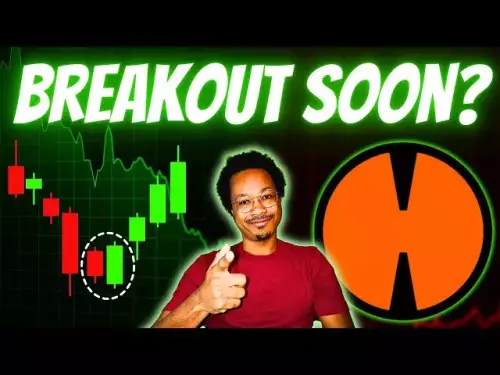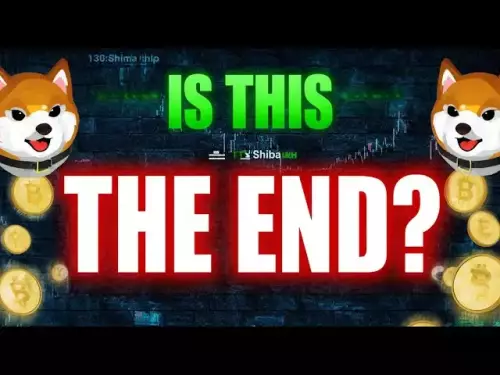-
 bitcoin
bitcoin $113137.862908 USD
0.65% -
 ethereum
ethereum $4107.436072 USD
-1.96% -
 xrp
xrp $2.908808 USD
2.59% -
 tether
tether $1.000294 USD
0.01% -
 bnb
bnb $1010.914842 USD
-1.12% -
 solana
solana $210.653310 USD
-2.16% -
 usd-coin
usd-coin $0.999776 USD
-0.01% -
 dogecoin
dogecoin $0.239360 USD
-0.04% -
 tron
tron $0.337849 USD
0.37% -
 cardano
cardano $0.807698 USD
-0.61% -
 hyperliquid
hyperliquid $45.387447 USD
0.61% -
 chainlink
chainlink $21.408287 USD
-0.92% -
 ethena-usde
ethena-usde $1.000509 USD
-0.04% -
 avalanche
avalanche $32.634682 USD
-4.77% -
 sui
sui $3.349772 USD
-0.19%
What is the difference between a limit order and a market order in Ethereum contracts?
Market orders on Ethereum-based DEXs enable instant trades via AMMs but carry slippage and sandwich attack risks, while limit orders offer price control through off-chain protocols but require external triggers for execution.
Sep 24, 2025 at 08:19 pm

Understanding Market Orders in Ethereum-Based Trading
1. A market order executes a trade immediately at the best available price within the decentralized exchange’s order book. This type of transaction prioritizes speed over price precision, making it ideal for users who want instant execution without waiting for specific conditions.
2. When placing a market order on platforms like Uniswap or SushiSwap, the transaction interacts directly with liquidity pools. The amount received depends on the current pool ratio and slippage tolerance set by the user.
3. Due to the volatile nature of Ethereum-based assets, market orders can result in significant price deviations during periods of high volatility. Users must account for this risk when trading large volumes.
4. Smart contracts managing decentralized exchanges automatically route market orders through automated market maker (AMM) algorithms. These algorithms determine output amounts based on predefined mathematical formulas such as x * y = k.
5. Gas fees on the Ethereum network also influence the final cost of executing a market order. High network congestion may increase transaction costs even if the token price remains stable.
Exploring Limit Orders in Ethereum Ecosystems
1. A limit order allows traders to specify the exact price at which they are willing to buy or sell an Ethereum-based asset. The trade only executes when market conditions meet the defined parameters.
2. Unlike centralized exchanges, native Ethereum smart contracts do not inherently support traditional limit orders. Instead, third-party protocols like 1inch or Loopring implement off-chain order books or intent-based matching systems to simulate this functionality.
3. Limit orders provide greater control over entry and exit points, reducing exposure to sudden price swings. Traders use them strategically to accumulate tokens at desired valuations.
4. Execution of a limit order may require additional monitoring tools or bots that watch the blockchain state and trigger transactions when conditions are met. Some services offer relay networks to broadcast these orders once thresholds are reached.
5. Because limit orders rely on external triggers or relayers, there is a possibility of front-running by miners or arbitrageurs who detect pending transactions in the mempool.
Key Differences in Execution Mechanics
1. Market orders guarantee execution but not price, while limit orders guarantee price but not execution. This distinction is critical in fast-moving markets where temporary imbalances can lead to unfavorable fills.
2. Limit orders require active monitoring or integration with specialized protocols, whereas market orders execute autonomously via AMM logic upon submission. The infrastructure behind each order type reflects different design philosophies in DeFi architecture.
3. Slippage settings play a crucial role in market orders, allowing users to define acceptable deviations from expected prices. In contrast, limit orders eliminate slippage concerns by locking in the target rate.
4. Transaction failure rates differ between the two types. Market orders typically confirm unless liquidity dries up completely, while limit orders may remain unfilled indefinitely if price levels aren’t reached.
5. Privacy considerations vary significantly. Market orders appear in the public mempool before confirmation, exposing intent. Advanced implementations of limit orders can obscure trading strategies using encrypted off-chain messaging layers.
Frequently Asked Questions
Can I place a limit order directly through an Ethereum smart contract?While base-layer Ethereum contracts lack built-in limit order capabilities, decentralized applications (dApps) utilize hybrid models combining on-chain settlement with off-chain order management. Protocols like Gnosis Safe or CowSwap enable limit-like behavior using signed messages and batch auctions rather than direct contract calls.
What happens to a limit order if the price never reaches the specified level?The order remains pending until canceled by the user or expired based on time constraints enforced by the protocol. No funds are moved unless the condition is fully satisfied, ensuring capital preservation.
Are market orders more vulnerable to sandwich attacks?Yes, because market orders interact directly with liquidity pools and reveal trading intent early, they are prime targets for sandwich attacks. Attackers exploit this by placing trades before and after the victim’s transaction to profit from price impact.
How does slippage protection work with market orders?Users set a maximum allowable deviation from the quoted price. If the actual execution price exceeds this threshold due to volatility or low liquidity, the transaction reverts, preventing unfavorable fills and conserving gas fees.
Disclaimer:info@kdj.com
The information provided is not trading advice. kdj.com does not assume any responsibility for any investments made based on the information provided in this article. Cryptocurrencies are highly volatile and it is highly recommended that you invest with caution after thorough research!
If you believe that the content used on this website infringes your copyright, please contact us immediately (info@kdj.com) and we will delete it promptly.
- Barron Trump: A Glimpse into the Life of Donald Trump's Youngest Son
- 2025-09-26 01:05:14
- Apple, Bitcoin, and iMessage: A New Era of Crypto Accessibility?
- 2025-09-26 00:45:14
- Crypto Presales: Unlocking 2025 Gains with Early Investment
- 2025-09-26 00:45:14
- Charlie Kirk, Currency, and Lawmakers: A Surprising Proposal
- 2025-09-26 01:05:14
- Hyperion DeFi's HYPE Token Acquisition: A Bold Move or Risky Gamble?
- 2025-09-26 01:45:16
- Rujira Pulse: THORChain's App Layer Revolutionizing DeFi
- 2025-09-26 02:05:15
Related knowledge

How do I enable the "scalping-only" mode for Cardano (ADA) contracts?
Sep 24,2025 at 03:19am
Understanding Scalping Strategies in Crypto Derivatives1. Scalping in cryptocurrency trading refers to executing multiple short-term trades within min...

What is the maximum position limit for Cardano (ADA) contracts?
Sep 23,2025 at 11:00pm
Understanding ADA Futures and Derivatives Market Structure1. Cardano (ADA) futures contracts are offered by several major cryptocurrency derivatives e...

How can I view open interest in Cardano (ADA) contracts?
Sep 24,2025 at 07:36am
Understanding Open Interest in Cardano Derivatives1. Open interest refers to the total number of outstanding derivative contracts, such as futures or ...

What is the function of the insurance fund in Cardano (ADA) contracts?
Sep 24,2025 at 02:18am
Understanding the Role of Insurance Funds in Cardano Smart Contracts1. The insurance fund within Cardano's ecosystem is not a native feature directly ...

How can I view historical transaction records for Cardano (ADA) contracts?
Sep 24,2025 at 04:01pm
Understanding Cardano's On-Chain Data Structure1. Cardano operates on a proof-of-stake blockchain that records all transactions in blocks secured thro...

How is the funding rate charged for Cardano (ADA) contracts?
Sep 24,2025 at 07:19am
Funding Rate Mechanism for Cardano (ADA) Perpetual Contracts1. The funding rate in Cardano perpetual contracts serves as a mechanism to align the pric...

How do I enable the "scalping-only" mode for Cardano (ADA) contracts?
Sep 24,2025 at 03:19am
Understanding Scalping Strategies in Crypto Derivatives1. Scalping in cryptocurrency trading refers to executing multiple short-term trades within min...

What is the maximum position limit for Cardano (ADA) contracts?
Sep 23,2025 at 11:00pm
Understanding ADA Futures and Derivatives Market Structure1. Cardano (ADA) futures contracts are offered by several major cryptocurrency derivatives e...

How can I view open interest in Cardano (ADA) contracts?
Sep 24,2025 at 07:36am
Understanding Open Interest in Cardano Derivatives1. Open interest refers to the total number of outstanding derivative contracts, such as futures or ...

What is the function of the insurance fund in Cardano (ADA) contracts?
Sep 24,2025 at 02:18am
Understanding the Role of Insurance Funds in Cardano Smart Contracts1. The insurance fund within Cardano's ecosystem is not a native feature directly ...

How can I view historical transaction records for Cardano (ADA) contracts?
Sep 24,2025 at 04:01pm
Understanding Cardano's On-Chain Data Structure1. Cardano operates on a proof-of-stake blockchain that records all transactions in blocks secured thro...

How is the funding rate charged for Cardano (ADA) contracts?
Sep 24,2025 at 07:19am
Funding Rate Mechanism for Cardano (ADA) Perpetual Contracts1. The funding rate in Cardano perpetual contracts serves as a mechanism to align the pric...
See all articles










































































